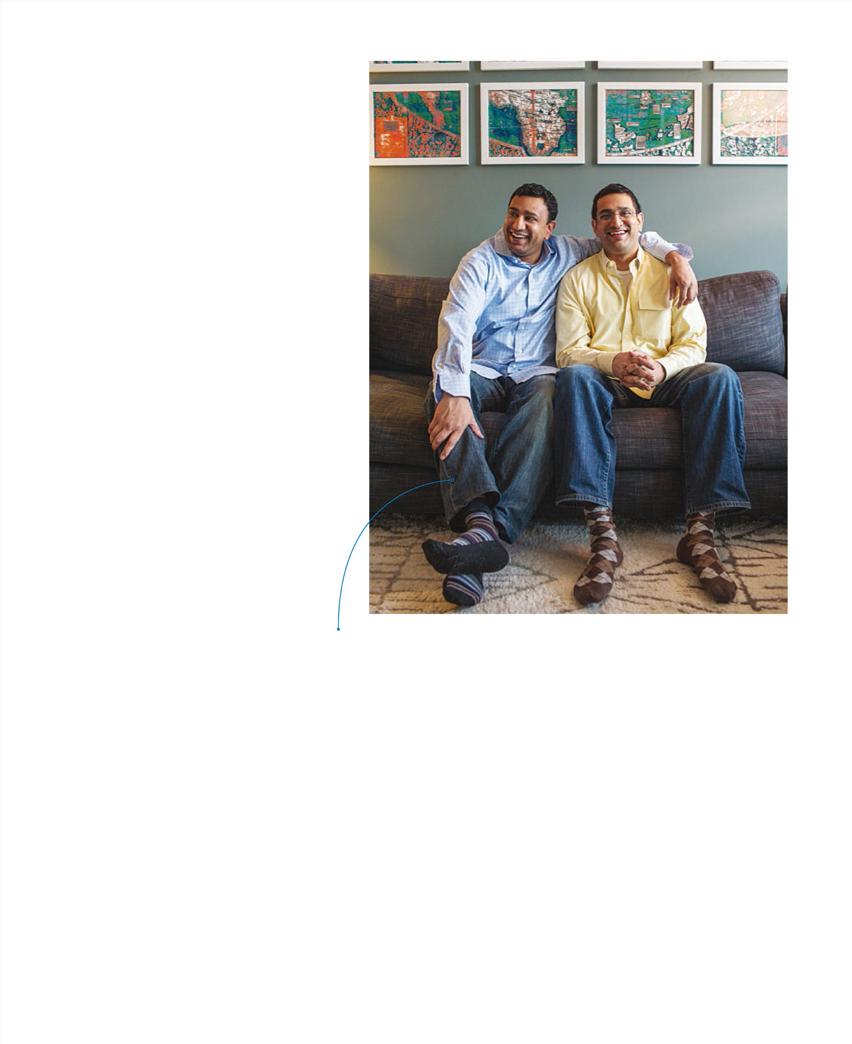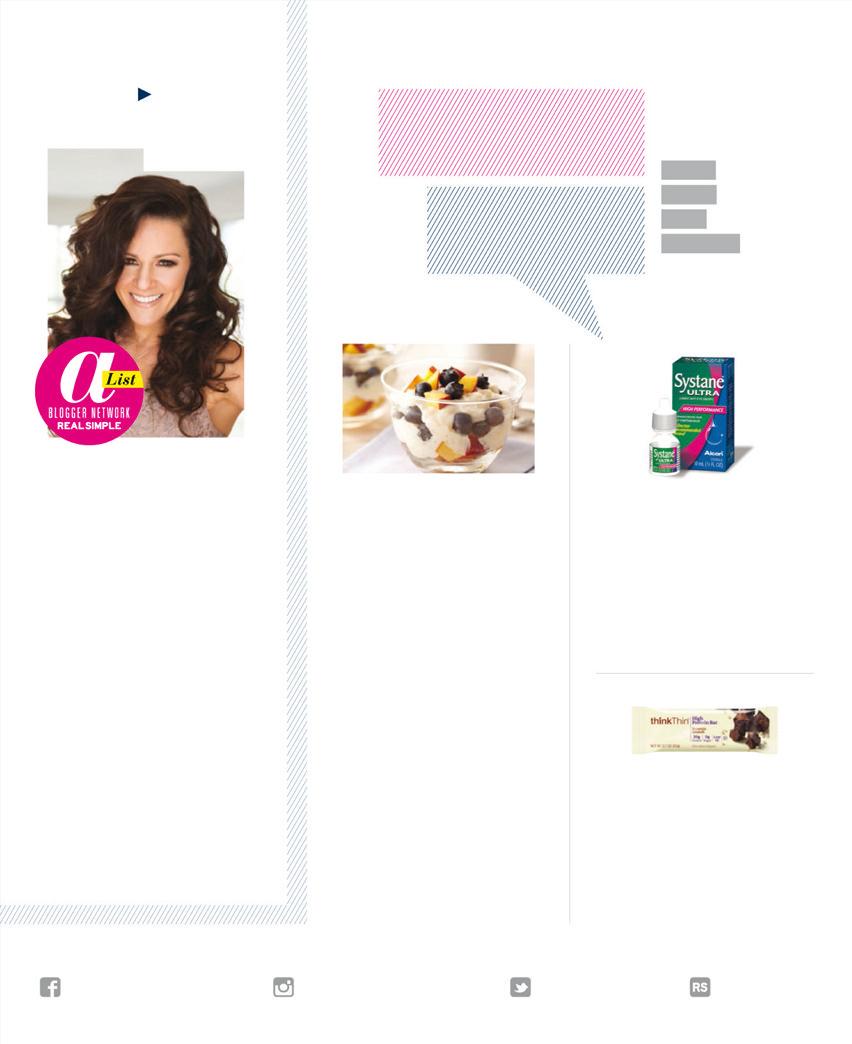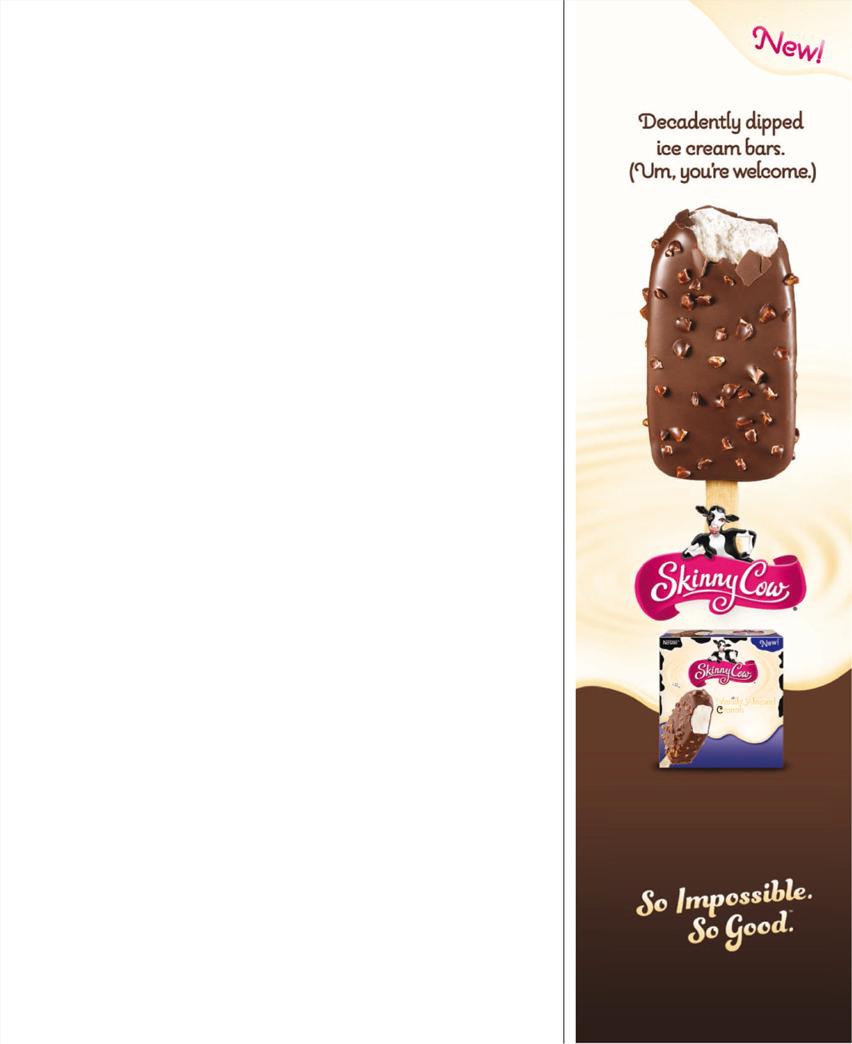
16 minute read
HEALTH
from RS - June 2015
PROTECTING YOUR DOG FROM FLEAS & TICKS IS AS EASY AS 1, 2, 3
1. Clean Your Yard
Advertisement
Removing underbrush from trees and raking leaves will reduce his chances of picking up fl eas and ticks.
2. Groom
Regular grooming with a fi ne-tooth comb will not only keep your dog looking good, it can help you spot evidence of fl eas and/or ticks.
3. Apply monthly REPEL and kill protection to your dog
K9 Advantix® II REPELS and kills fl eas, ticks, and mosquitoes too. Repellency is key. If ticks are repelled or killed, they cannot attach and transmit the organisms that may cause disease.
Help protect your dog with K9 Advantix® II: broad-spectrum protection against fl eas, ticks, and mosquitoes too. Learn more at K9AdvantixII.com.

Do not use on cats.
©2015 Bayer HealthCare LLC, Animal Health, Shawnee Mission, Kansas 66201 Bayer (reg’d), the Bayer Cross (reg’d), K9 Advantix® , and for the love of dog™ are trademarks of Bayer. K15569 sis (hardening of the arteries) by improving blood flow, according to a 2014 study from Wageningen University, in the Netherlands. The secret? Cocoa is chockfull of antioxidants. DOSE: About an ounce a day, which is usually a few squares. Look at the package to be sure. CHECK THE LABEL: Choose chocolate made from at least 70 percent nonalkalized (also called non-dutched) cocoa.
COENZYME Q10 (COQ10): This antioxidant is found in every tissue in your body. Its highest concentrations are in the heart, where it plays a key role in regulating blood pressure. Your natural supply of CoQ10 decreases with age, but if you have hypertension, supplementing daily may reduce your systolic blood pressure by approximately 10 percent, according to a 2007 Journal of Human Hypertension study. It also helps people with congestive heart failure to avoid additional heart problems. DOSE: 100 to 200 milligrams daily. If you have congestive heart failure, take 400 to 800 milligrams. If the brand you purchase contains a form of CoQ10 called “ubiquinol,” halve the dose. CHECK THE LABEL: For best absorption, choose soft-gel or chewable tablets, and take it with a meal.
GARLIC: Garlic worked better than a placebo in reducing high blood pressure, according to a 2008 study published in the journal BMC Cardiovascular Disorders. Researchers cite its sulfuric compounds, which may improve immunity, too. DOSE: Eat one to two cloves of raw garlic daily. (You can add it to a pesto or salad dressings.) Or take 300 milligrams of dried-garlic-powder tablets two to three times a day.
FOR YOUR STOMACH
APPLES: If you’re prone to constipation, “an apple a day will make you go more easily, thanks to its high water and fiber content,” says Kilham. Peaches, pears, dried figs, and prunes also work as natural laxatives. DOSE: One or more apples daily.
GINGER: Numerous studies show that ginger reduces nausea and morning sickness. The spicy root’s antispasmodic effects also ease an upset stomach. DOSE: Take a 500-milligram capsule two to three times a day, as needed. Or try crystallized ginger chews, or sip ginger tea. However, dried ginger works best for nausea and vomiting. CHECK THE LABEL: If you’re pregnant, don’t take any product that lists “ginger extract,” a concentrated form of ginger that can be unsafe during pregnancy.
PEPPERMINT: If you suffer from irritable bowel syndrome or chronic stomach pain, taking peppermint oil before a meal can reduce intestinal cramping and bloating better than a placebo, according to a British Medical Journal study. DOSE: Take an enteric-coated capsule containing 0.2 milliliter of peppermint oil about 30 minutes before each meal. The coating allows the oil to reach the intestines more quickly. Peppermint tea can help with general stomach upset, but if you suffer from heartburn, be cautious: Peppermint can cause flare-ups.
FOR YOUR SKIN
ARNICA: Arnica ointment may help bruises heal faster. It also reduces inflammation and pain. DOSE: Apply several times daily.
CALENDULA: In addition to helping bruises clear up faster, this marigoldderived extract has antibacterial properties that reduce the risk of infection in open wounds. DOSE: Apply a cream, ointment, or gel with calendula several times daily.
HONEY: Applied topically, honey is antibacterial and promotes wound healing. DOSE: Buy commercially prepared honey compresses, or make your own by pasting 1⁄2 ounce honey onto a gauze pad and applying it to the affected area. Change the dressing twice a day.
OATMEAL: Oatmeal can relieve itchy rashes, like poison ivy and eczema, and the sting of sunburn. “Oats contain a group of compounds called avenanthramides, which block the release of histamine, dramatically reducing redness and itching,” says Tieraona Low Dog, M.D., the author of Healthy at Home: Get Well and Stay Well Without Prescriptions. DOSE: Make a sachet by mixing 1 cup rolled oats with ¼ cup baking soda and filling the foot from an old pair of panty hose. Tie the sachet at the end and drop it in a warm bath. Soak your body for 20 to 30 minutes. Repeat as needed.

health TAMANU OIL: Native to the South Pacific islands, this oil is high in antiinflammatory fatty acids and may spur the growth of new, healthier tissue. Kilham uses it to treat acne, bug bites, stretch marks, sunburns, warts, and minor wounds. DOSE: One hundred percent tamanu oil is available at health-food stores. Dilute it by adding a few drops to your own lotion, or massage it directly into skin. Apply several times daily. Avoid if you’re pregnant or nursing.
TEA-TREE OIL: Made from the leaves of a tree found on the northeast coast of Australia, this oil has antibacterial and antifungal properties that help heal acne, athlete’s foot, nail funguses, and dandruff, according to a 2006 Clinical Microbiology study. DOSE: Dab a drop of oil directly on your skin several times daily. The 2006 study focused on gels containing 5 percent tea-tree oil, but Low Dog recommends using 25 percent to treat tough conditions, like athlete’s foot.
FOR YOUR PELVIS
BORIC ACID: Derived from a volcanic mineral called sassolite, this natural antibacterial agent was found to be just as effective as standard OTC suppositories in treating yeast infections, but with few side effects, according to a 2011 Journal of Women’s Health review of 14 studies. DOSE: “Fill each capsule with 500 to 600 milligrams and insert one into your vagina every day for five to seven days,” says Low Dog. (You can buy boric acid and empty gelatin capsules at most pharmacies.) Never take boric acid by mouth, and don’t use it if you’re pregnant.
CRANBERRY EXTRACT: The tart berry contains antioxidants that can help you recover from a urinary tract infection (UTI) faster. Although the antioxidants don’t kill the UTI-causing bacteria, they make it difficult for the bacteria to cling to the wall of the urinary tract, so they can be expelled when you urinate. DOSE: Take an 800- to 1,000-milligram cranberry capsule daily, or drink a glass of pure, unsweetened cranberry juice daily.
OMEGA-3 FATTY ACIDS: These inflammation-easing fats can dramatically reduce menstrual cramps in just three months, says Low Dog. DOSE: A 1- to 2-gram supplement daily.
HONEY Used as a medicine since ancient times, honey helps heal wounds. And research shows that a teaspoon of the sweet stuff soothes a stubborn cough as effectively as OTC medications do.
FOR YOUR WHOLE BODY
COCONUT OIL: Research suggests that coconut oil may play a role in weight loss. Its medium-chain triglycerides, a type of saturated fat, tend to be burned for fuel instead of stored, the way some other fats are. In addition, a study published in Asia Pacific Journal of Clinical Nutrition found that premenopausal women who ate coconut oil had higher levels of “good” HDL cholesterol. Coconut oil makes a great moisturizer, too. DOSE: Include a teaspoon or so in your daily diet. When using it topically, massage it directly into skin.
COFFEE: “Aside from water, it’s the healthiest beverage you can drink,” says Kilham. “Data shows that its antioxidant content enhances heart health and reduces the risk for many cancers [including breast and colon] and neurodegenerative disorders, like Parkinson’s disease.” And every cup you drink lowers your risk of type 2 diabetes by 7 percent, according to a 2011 Journal of Agricultural and Food Chemistry study. DOSE: Drink it as you like it, but if you suffer from anxiety, high blood pressure, or insomnia, switch to decaf. You’ll get the same benefits without the jitters.
CURCUMIN: Derived from turmeric root (a primary ingredient in curry powder), curcumin reduces inflammation. That’s why it’s been shown to be more effective than ibuprofen and naproxen in painrelief studies, and it doesn’t pose the same risk for liver and kidney damage that the over-the-counter meds do. Research also shows that it offers relief for rheumatoid arthritis, osteoarthritis, and headaches, and may help treat depression, asthma, and psoriasis. DOSE: Take 1 to 3 grams daily.
BRIGHT IDEAS
OFFERS
EVENTS
FINDS
GIVEAWAYS
19TH ANNUAL BOSTON POPS ON NANTUCKET CONCERT
Pack your beach chair and join us for the ultimate summer celebration, the 19th annual Boston Pops on Nantucket concert to benefit Nantucket Cottage Hospital.
Experience the acclaimed Boston Pops Esplanade Orchestra, a celebrity host and a special guest performance, spectacular fireworks, and more. Located on one of Nantucket’s beautiful beaches.

CONCERT DETAILS Saturday, August 8, 2015 Jetties Beach, Nantucket
Gates open: 4:30 p.m. Showtime: 7:00-9:00 p.m. Fireworks: 9:05 p.m.
For tickets, visit rslifestylers.com/events.
The NEW Olay Total Eff ects Featherweight Moisturizer SPF 15 is formulated with Olay SolaSheer Technology. This is a photostabilized sunscreen system that nourishes the skin with a vitamin complex while protecting against both UVB and UVA rays. Refresh your daily routine at olay.com.
SIMPLY DELICIOUS PUDDING
Remember pudding? Good pudding. Real pudding. Pudding made with real ingredients like the ones you can find in your kitchen: milk, eggs, sugar, and rice. If you believe in pudding made right, you’ll love all Kozy Shack® Pudding varieties— from original rice to tapioca and chocolate. Explore them all at kozyshack.com.
STAY CONNECTED WITH MYQ GARAGE™
Monitor and control your garage door from anywhere, at anytime with Chamberlain® MyQ Garage™. Receive notifications to your smartphone when your garage door has been left open and close it with the tap of a button. Stay connected whether you’re home or away at chamberlain.com/myq.
SEE WHAT WE’RE LOVING + DISCOVERING
Keep up with the tastemakers and trendsetters behind the brand you love! Go to rslifestylers.com and follow us on social media for an inside look at the latest doings and obsessions of the RS Marketing team.

The real deal with birth order
Why do the stereotypes exist? And are our personalities predestined accordingly? Experts—and three sets of siblings— set us straight.
HERE’S THE THING about birthorder myths: They don’t just make fascinating cocktail-party talk. (You are totally a middle child!) There are solid psychological reasons why many fit the mold. And yet for every classic firstborn CEO, there’s one strumming a ukulele in Samoa without a care or college degree in the world. It’s time to discuss why. (Plus, it’s fun.) No wet willies, OK?
Written by Ingela Ratledge Photographs by Lauren Fleishman
THE CAIAZZO SIBLINGS
From left: Rose Campagna, 81; Mary Buonagure, 80; John Caiazzo, 78; Ann Yodice, 75; and Dolores Slater, 66.
“I was one to stretch the rules and go out with friends. Mary took on the motherly role with Dolores.”
—ROSE
“My mother said raising Rose, me, and John was like having triplets. I was John’s protector.”
—MARY
“I did get a lot of attention for being the only boy. But believe me—Dolores got away with a lot more than the rest of us.”
—JOHN
“Since John was the closest to my age, I always tagged along with him and his friends. I was a tomboy.”
—ANN
“There were perks to being the youngest. I didn’t have to share! I had my own bike and roller skates.”
—DOLORES

family
What you’ve heard
The truth behind the most common birth-order myths—and the exception to every rule.
THE FIRSTBORN
Stereotype: Natural leader, ambitious, responsible. Why it’s true: The eldest, for a while, has no competition for time (or books or baby banter) with Mom and Dad. “There’s a benefit to all of that undiluted attention. A 2007 study in Norway showed that firstborns had two to three more IQ points than the next child,” says FrankJ. Sulloway, Ph.D., the author of Born to Rebel. Firstborns tend to be surrogate parents when other sibs arrive, hence their protective and responsible nature. When it’s not: Parents can set high expectations for a first (or only) child. “When he feels like he has disappointed his parents or can’t measure up, he may veer off in another direction,” says Kevin Leman, Ph.D., a psychologist and the author of The Birth Order Book.
THE MIDDLE CHILD
Stereotype: Social butterfly, peacekeeper, fairness-obsessed. Why it’s true: “Middle-borns don’t have the rights of the oldest or the privileges of the youngest,” says Catherine Salmon, Ph.D., a coauthor of The Secret Power of Middle Children. As a result, they become experts at negotiation and compromise. They also tend to lean on their friends, as their parents’ attention is often focused on the oldest or youngest child. When it’s not: If the oldest doesn’t act the part, “it creates a job vacancy,” says Salmon. “Donald Trump is a middle with a firstborn are more lenient, so youngest kids tend to be less rules-oriented, and yet they still get lots of attention,” says Salmon.
THE MASCARI SIBLINGS
From left: J J Mascari, 36; Sara Mascari Gresh, 38; and John Mascari, 29.
“If you met me on the street, you’d guess I’m the oldest. I’m a perfectionist and fiercely protective. But John is like an oldest, too. He’s a total overachiever. J J is a typical middle child, social and funny.”
—SARA
“I was nervous when John was born, that I would have to give up being the favorite. But I’m still the favorite.”
—JJ
“Being the youngest probably gave me my ‘I’ll show ’em’ attitude. I had to be faster to keep up.”
—JOHN
brother who didn’t fit the role. Donald usurped it.” And what if there are several middle children? “There’s a principle that each child is trying to be different from the one immediately older,” says Salmon. “So if you had three middles, the first and third would likely be a bit more similar to each other than to the very middle child.”
THE BABY
Stereotype: Free spirit, risk taker, charming. Why it’s true: Parents are less cautious. (Hey, the older ones ate the dog’s food and lived!) And they also probably have more resources than they did when starting out. “Parents When it’s not: “Some babies resent not being taken seriously,” says Linda Campbell, a professor of counseling and human development at the University of Georgia, in Athens. “They might become very responsible, like the oldest, or social, like the middle.”
5+
YEARS BETWEEN KIDS ACTS AS A RESET BUTTON, KICKING OFF A NEW FIRSTBORN. THE MATHEW SIBLINGS
From left: Vivek, 38, and Vinoo, 33.

family
What throws it all off
Don’t feel like your birth order? You’re not alone. According to the White-Campbell Psychological Birth Order Inventory (or PBOI)—a test developed to measure whether people are a “fit” for their rank— only 23 percent of women and 15 percent of men are a true match. Here are the major disrupters.
TEMPERAMENT
Nothing affects personality development more than genetics. Roughly half of your personality is the temperament you’re born with, says Sulloway. And that’s why where you fall in your family or how early you had to start sharing blocks is only part of the pie. A child’s temperament can trump birth order—or at least blur the lines. Firstborns, in particular, are expected to succeed at whatever the family prizes most. (Son, you come from a long line of politicians…) So when they aren’t well suited, it turns into a sibling free-for-all. “If the firstborn can’t excel at what the family values, for example, that position could shift to another child,” says Salmon.
“I’m more evenkeeled than Vinoo. I get jealous sometimes of how much joy he experiences. I carry more guilt about being a good son or brother.”
—VIVEK
“Without Vivek’s encouragement and protection, I wouldn’t be who I am. I moved to New York after college entirely because he let me live with him.”
—VINOO GENDER
“Gender is a significant influence when it comes to the birth role that one develops within the family,” says AlanE. Stewart, Ph.D., who researches birth order at the University of Georgia. For example, Andrew is a by-the-numbers, achievement-driven firstborn. When Annie comes along, she doesn’t have to worry about carving out her own identity or living in his shadow the same way that another boy would. She’s already fundamentally different. The result: “When the first two children are different genders, they often both behave like firstborns,” says Leman. In fact, the secondborn could even eclipse the eldest. “If there’s a high value being placed on one gender over the other, the dynamic gets disrupted,” says Salmon. (P.S. In larger families with a lone girl or boy, that “exotic” status will also enable the child to escape his or her stratum.)
PHYSICALITY
Age and size advantage frequently go hand in hand, so older kids get to boss
younger ones around because they’re bigger. Except if you happen to have a slight eldest child or an especially robust middle or youngest. In that case, the power dynamic can flip-flop, says Leman.
SPECIALNESS
Yes, yes, they’re all special. But when one child is a violin prodigy or an Olympic gymnast, she tends to get the prime treatment (and pressure) of a firstborn, no matter her actual spot. “For the chosen one, being special will negate other birth-order things, like middle-child syndrome,” says Leman. If that happens, other siblings must adjust. Other circumstances can alter families, too. “A child with a disability who needs extra care can disrupt the sibling dynamic,” says Campbell. A grandparent living in the home can also shift things—if one kid gets extra attention from Nana, say, or takes on a caretaker role.
AGE SPACING
“The closer the age intervals are between siblings, the more competition there is,” says Stewart. When kids are one to two years apart, especially if they are the same gender, there’s more conflict, says Salmon. (Good news: That doesn’t mean they won’t be close when they’re older.) Parents are also overwhelmed, which adds to the turmoil. The closely born second child may overtake the firstborn role by being better, faster, and stronger—or zig to her zag. (She likes to dance? I’m going with softball.) Three to four years tends to be a sweet spot; kids are close in age but have room to be themselves, says Salmon. Many experts agree that five or more years between kids acts as a reset button, kicking off a “new family” with a fresh firstborn. And the former youngest, now middle, may never shed the baby role. “If you’re a second child whose sibling is 10 years older, then in most practical ways you grew up as a firstborn or only child,” says Sulloway. What about twins? Rules don’t apply. “Twins are the special focus of their parents,” says Salmon. “There’s typically less competition between identical twins. Fraternal twins, however, behave more like other siblings.”
© 2015 Gain and Febreze are trademarks of The Procter & Gamble Company, used under license. Glad and OdorShield are registered trademarks of The Glad Products Company.











